Just before starting the Steel Division: Normandy 44’s Christmas Event tomorrow, we wanted to finish our Divisions’ showcase with the youngest (by the average age of its members), yet most efficient German division in Normandy: the 12. SS-Panzerdivision “Hitlerjugend“.
ORIGINS
Although the idea had been around for some months already, the concept of recruiting a new SS division from “men” born in 1926 (meaning 17 years old!) and members of the Hitlerjugend (HJ) nazi youth organization was only ratified on June 10th, 1943. Originally planned as a Panzergrenadier-Division, it was intended as a “Young Guard” fighting alongside the “Old Guard” 1. Panzergrenadier-Division ‘Leibstandarte SS Adolf Hitler‘ (LSSAH).
The ranks & files were to be an all-volunteer force and the teenagers recruited were to be at least 1,70m high for the infantry, 1,68m for the others arms. At the time of their selection, the HJ recruits were the best fitting & motivated “men” of an age group still untouched by drafts. At a time when other SS divisions had to lower their recruiting standards or press unwilling “ethnic Germans” into their ranks, HJ not only quickly met its quota but outreached it.
To further consolidates the links between the HJ & LSSAH divisions, the veteran cadres needed to shape the former would be taken from the latter, starting with the new divisional commander: Fritz Witt. Like him, all the regimental and battalion commanders, as well as most company ones, were transferred from LSSAH, many of them being promoted to a superior rank to serve in the new division. Some of them were already decorated figures of the Waffen-SS, such as Max Wünsche, Wilhelm Mohnke, Kurt Meyer, … men the HJ teenagers already knew from propaganda literature and regarded as heroes and models. This influx of veteran leaders provided HJ with a strong leadership but crippled the already decimated LSSAH which will never be after the second half of 1943 up to the standards it was before.
TRAINING
The division started training in Belgium, near Anvers, from June to September 1943. Despite enlisting its full complement of volunteers very quickly, HJ took longer than expected to be fully operational for many recruits were given a reprieve before joining the division to … graduate. The regular training regimen was mostly disregarded by the veteran LSSAH cadre who instead drawn live-fire, practical exercises and realistic combat scenarios.
It was during their training in Belgium that the HJ teenagers learned that their new division was to be designated 12. SS-Panzergrenadier-Division “Hitlerjugend” and, shortly after, to be converted into a full-fledged Panzerdivision. Declared operational in March 1944, HJ was moved to Normandy, behind Caen.
BATTLE OF NORMANDY
When the Allies hit the beach of Normandy on June 6th, 1944, there was hardly a German division on the Western front more prepared and motivated to meet them. At 2:30 PM on June 6th, the division was ordered to counter-attack in the Caen sector with Kurt Meyer’s 25. Panzergrenadier-Regiment in the vanguard. Yet, delayed all day by Allied air & naval bombardment, it wasn’t able to skirmish with the Allies before 10 PM.
The next morning, finding Carpiquet airfield almost undefended and the 3rd Canadian Infantry Division about to seize it, Meyer counterattacked and pushed the Canadians back toward Juno Beach, only to be stopped himself by intense Allied naval fire. That same evening, eleven Canadian prisoners brought to Meyer’s HQ were shot in the back of the head. The next day, the rest of the division reached the frontline: Carpiquet would not fall to the Allies for another month.
On June 14th, Royal Navy guns opened fire on the division’s HQ, killing commander Fritz Witt in the process. 33 years old Kurt Meyer was appointed as its successor, thus becoming the youngest divisional commander in the German Army.
For the rest of June, 12. SS-Panzerdivision held Carpiquet and the Western perimeter in front of Caen. Although it held the airfield for over a month, despite constant bombardment and heavy losses, it wasn’t able to stop the British offensive against Cheux and across the Odon river during Operation Epsom, in late June. Only at the very feet of the strategic Hill 112 were the British (temporarily) stopped, with the help of several other panzerdivisions.
CARPIQUET AIRFIELD
About one week later, on July 4th, the Canadians initiated Operation Windsor to finally capture Carpiquet and its airfield, defended by elements from I,/SS-Panzergrenadier-Regiment 26. Advancing in the wake of a tremendous artillery preparation delivered by no less than 248 field guns as well as the heavy 380mm & 408mm volleys from HMS Rodney & HMS Roberts, the 3rd Canadian Infantry Division with the 2nd Canadian Armoured Brigade in support managed to capture the village of Carpiquet itself after intense street fightings. But for the second part of the assault, to secure the hangars and runway, the Canadians had to attack in the open. Facing them, the surviving HJ grenadiers could now count on the support of a dozen tanks and six 88mm guns: after crossing half of the open field, Canadian tanks were forced to turn back, leaving several of them ablaze on the runway. Later that day, a second Canadian armored assault, supported by two Typhoon squadrons, met the same fate.
But Kurt Meyer wasn’t a man to be satisfied with a defensive victory: during the night, he planned a counter-attack and gathered what forces he could still muster. Just past midnight, on June 6th, HJ counter-attacked to retake the lost positions. But the Canadians were no less determined to hold the ground they had so costly gained: expecting such a reaction from their young nemesis, they had immediately set defensive positions in Carpiquet and proved as unyielding in defense as their foe. Three times during the night the HJ grenadiers hurled themselves at the Canadian positions, only to be repelled with heavy losses. Between each assault, the Canadians were subjugated to heavy mortar & Nebelwerfer bombardment, yet held fast. But at dawn on June 6th, with the first lights, the SS came back supported by LSSAH tanks: the Quebeckers from the Régiment de la Chaudière had to give up some ground this time … only to come back and recapture it later in the day with the support of their own tanks. Finally, the fighting died between the two opponents, both exhausted. 12. SS-Panzerdivision still denied the Allies the airfield and occupied a threatening salient into their frontline. But at a cost of lives and equipment it couldn’t afford anymore.THE FALL OF CAEN
Less than a week later, on July 8th, the Anglo-Canadians launched Operation Charnwood with the objective of finally capturing Caen. Carpiquet airfield being too much of a nut to crack, the Canadians attacked further East, at Buron. The HJ grenadiers were well prepared to receive them with mines, anti-tank ditches, Panzer support and even a full company of Panther in reserve ready to counter-attack. But this time the fanatical teenager met their match: given the order to capture Buron at all cost, the Canadians did just that, stopping at nothing. By the end of the day, the Canadian assault companies had lost 60% of their numbers but had secured all their objectives. The Panthers, at one moment about to tip the balance of the battle, met a wall of anti-tank fire from British Achilles, knocking out 13 out of about 17 of the cats!
The next day, 450 RAF bombers & fighter-bombers targeted Carpiquet airfield, which the Régiment de la Chaudière finally captured on July 9th without much fighting: with Buron lost and Caen about to fall, Meyer had understood that dying for Carpiquet would be useless, and finally retreated his division South of the Orne, in violation of Hitler’s orders.
FALAISE POCKET
12. SS was placed in reserve near … Falaise. As can be expected, it didn’t get much rest. Barely a week after the fall of Caen, the Americans broke the German front with Operation Cobra, soon to be imitated by the British with Operation Bluecoat. The German Army was now in full retreat, with the Allied jaws closing on both sides. HJ was used as a fire brigade, being given the mission of protecting the Northern flank of the army: it did so in its usual fashion, by counter-attacking everywhere the British began to break through.
But by August 19th, the VII. Armee was trapped, a Polish battlegroup having taken position across its last road of escape. During the night, a plan was drafted for the units still in fighting condition to storm the Poles and open the way. Among them were the remnants of the 12. SS, diminished yet still organized. The plan was for two columns, one armored formed mostly around 1. SS-Panzer & 116. Panzer reinforced by almost all remaining tanks and an infantry one build around 3. Fallschirmjäger & HJ, to attack the plateau held by the Poles. At the same time, as relief column from II. SS-Panzerkorps was to strike from outside the pocket. 12. SS was to be the rearguard of its group, waiting for the Fallschirmjägers to open a path and direct them there.
Before dawn on August 20th, the attack began. And immediately, contact was lost between the vanguard (3. FJ) & rearguard (12. SS). The latter waited for the signal to march, but never received it, maybe due to General Schimpf, commander of the 3. FJ, being wounded very early in the battle. After hours of waiting, Kurt Meyer and his staff decided to start moving anyway. Soon, the column also split into several groups: Meyer, suffering from a head wound, couldn’t catch up with the others and had to be almost carried away by his Russian aide, while VII. Army commander Paul Hausser which had started the march with him was severely wounded in the jaw and evacuated in an armored vehicle.
Although the division had suffered heavy losses, Kurt Meyer’s claim in his memoirs that the division was left with barely a few hundred soldiers is false. Out of 12.000 HJ men who went to Normandy, 2/3 were indeed casualties but a vast majority of them were in the infantry. The more technical branches had been spared such an ordeal, and several battered units of the division, as well as service ones, had even been evacuated before the Falaise pocket was closed.
AFTER NORMANDY
12. SS kept retreating toward the Belgian border, harassed along the way by Allied pursuers and air force, as well as French & Belgian partisans. On September 6th, Meyer and his driver were cut from the rest of the division: the former was captured, the latter shot. Hubert Meyer (unrelated to his namesake commander), the divisional chief of staff, took over command up to the end of November, before returning to his former role and being replaced in command by General Hugo Kraas.
It is Kraas who led the reformed HJ division during the battle of the Bulge. Attacking on December 16th, 12. SS met unexpected resistance from the Americans, forcing it to bypass them to attempt to reach its objectives. In vain. Withdrawn from January 14th, it was given no rest and sent to Hungary to take part in the attempt to free the besieged city of Budapest. By the time they arrived, the Hungarian capital was already about to fall, and 1. & 12. SS-Panzer were redirected to recapture the Hungarian oil fields. Ultimately, this attempt also failed in the face of the Red Army.Retreating toward Vienna, it couldn’t prevent the city from falling to the Soviet too. Moving further West, the remnants from the division managed to reach the American lines in order to surrender to the Western Allies.
INTRODUCING A NEW ACE: WILLY KRETZSCHMAR
12. SS-Panzerdivision has been around for long enough in Steel Division for its playstyle to be well-known already. Therefore, let’s focus on the one new feature which will be introduced by the Christmas Event: Panzer ace Willy Kretzschmar.
Unterscharfuhrer Kretzschmar was an NCO in HJ‘s 5. Kompanie, Panzerregiment 12. A tank commander, he became a “triple ace” over the course of the battle of Normandy, with at least 15 certified kills. But what sets it apart from other successful German Panzer ace was the look of his tank: after an unexpected meeting with a Canadian artillery shell which hit it directly on the forward right track, Panzer IV “536” was immobilized for a day then, once its track was repaired, went back to battle with its right front corner completely torn apart.
Ingame, Kretzschmar will replace an Elite Panzer IV H.You’ll be able to unlock this exclusive Ace during the Christmas Event, starting tomorrow!

![wittfritzbio[1]](https://eugensystems.com/wp-content/uploads/2017/09/wittfritzbio1-209x300.jpg)
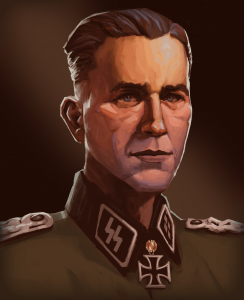
![uXWkHrE[1]](https://eugensystems.com/wp-content/uploads/2017/09/uXWkHrE1-300x183.png)
![carpiquet_aerodrome-1[1]](https://eugensystems.com/wp-content/uploads/2017/09/carpiquet_aerodrome-11-300x225.jpg)
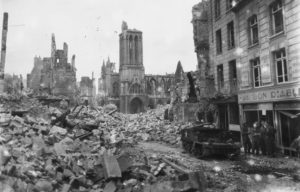
![Kraash[1]](https://eugensystems.com/wp-content/uploads/2017/09/Kraash1-205x300.jpg)
![c93ee9939a201fa871e4bff3c659c293[1]](https://eugensystems.com/wp-content/uploads/2017/09/c93ee9939a201fa871e4bff3c659c2931-300x208.jpg)
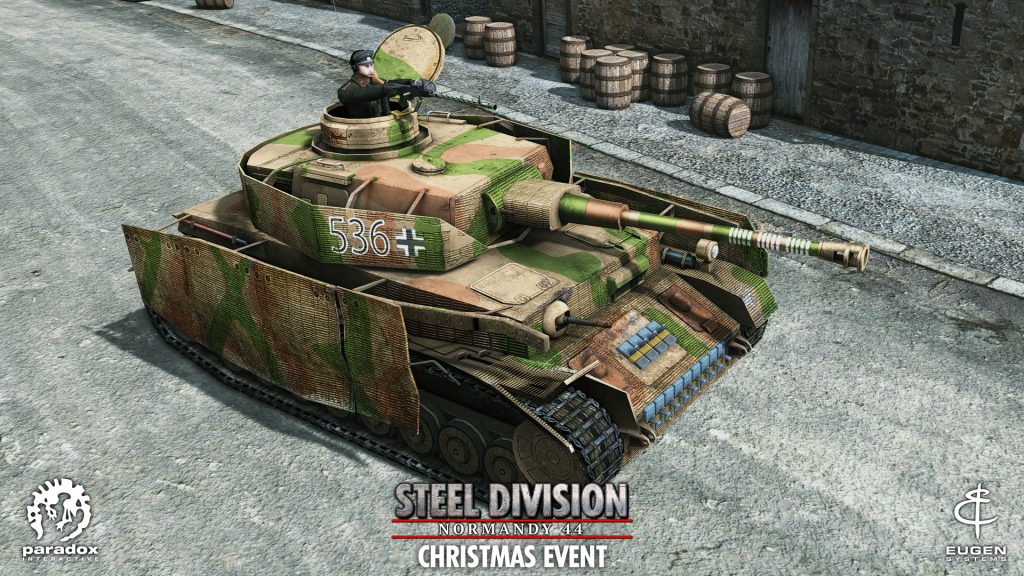
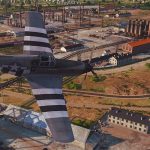
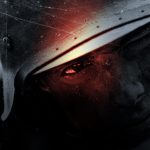
No Comments